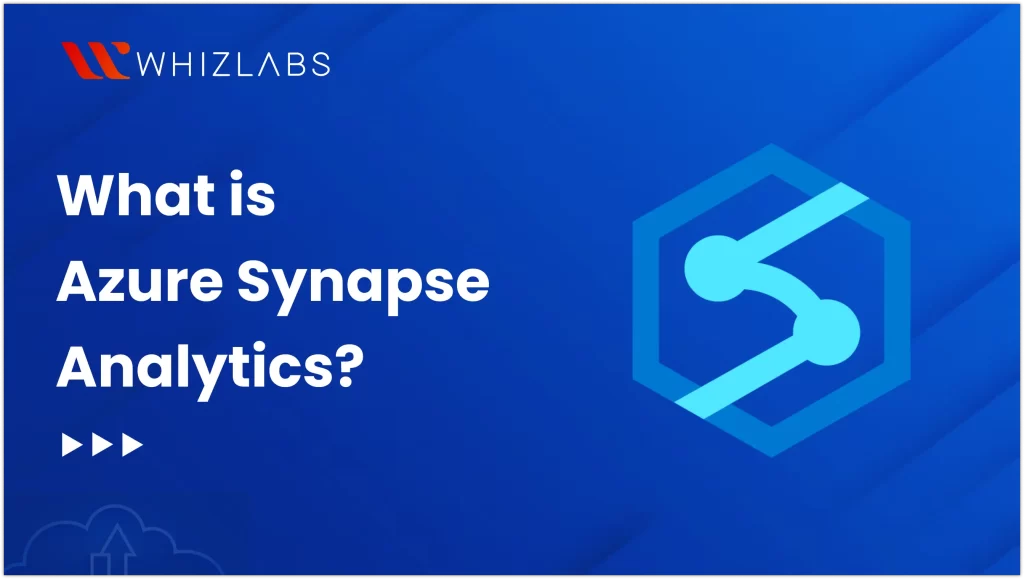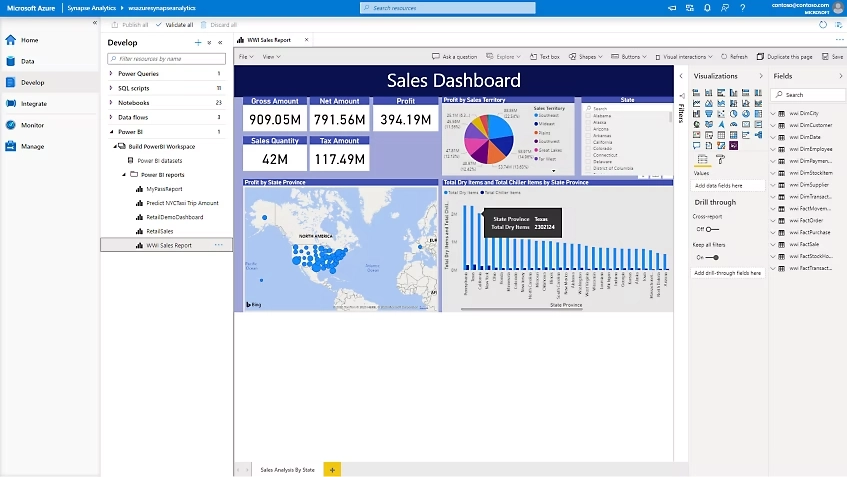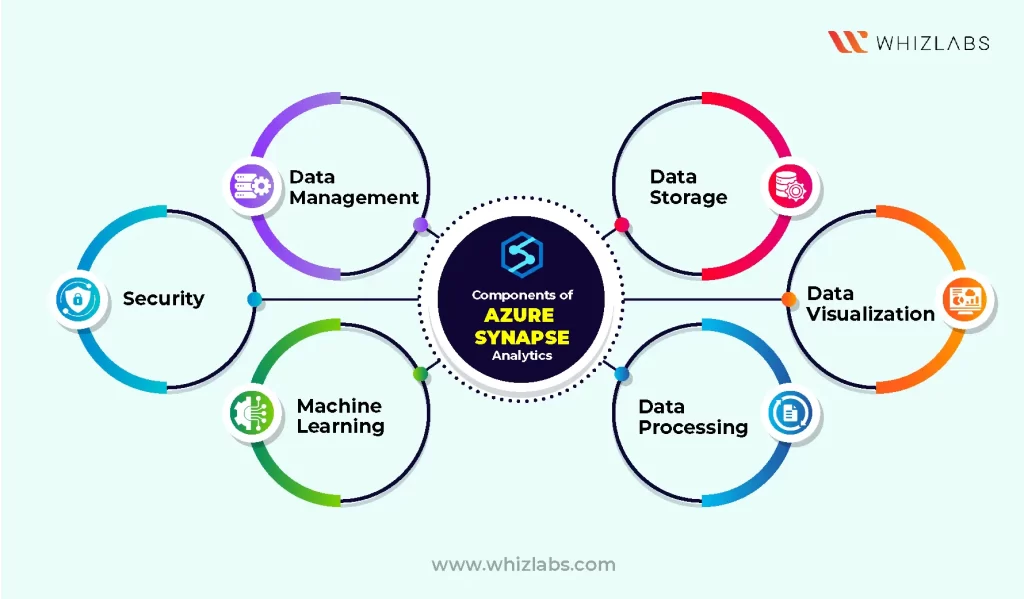Today, big or small organizations must collect, integrate, and consume vast amounts of data across data warehouses, data lakes, extensive data analytics systems, etc. For mission-critical technical tasks, you need an agile infrastructure that helps you optimize query performances and offers limitless and accurate processing of those data.
But how can you achieve this without going into manual work?
The answer is Microsoft Azure Synapse Analytics, powered by Big Data and ETL. This Azure tool lets you seamlessly extract, transform, and load data into a data warehouse and use it for better decision-making. Additionally, it offers a cloud service combining all the tools you need to gather and harness data. Thereby fulfilling the needs of machine learning, needs of data engineering, and business intelligence.
This blog will walk you through everything you need to know about Azure Synapse Analytics – what it is, its benefits, its components, how it works, and how you can gain deep expertise in the domain. This topic is covered in the exam DP – 203. Let’s dive in.
What is Azure Synapse Analytics?
Microsoft Azure Synapse Analytics, the successor to Azure SQL Data Warehouse, is a cloud-based analytics solution offering big data processing, storage, and analytical capabilities. IT lets you draw meaningful insights from your data by driving a serverless environment for data warehousing and big data analytics. The service also gives you built-in machine learning and AI functionalities.
In addition, it offers all the features of the MPP database from the SQL data warehouse, popularly known as Synapse SQL. However, the new version offers numerous features, making it a turbocharging tool for data analytics across industries. Azure Synapse combines the best of Cloud Data Warehouse and Big Data Analytics under one umbrella, so you don’t have to use Data Warehouse and Data Lake separately for trivial tasks.
Also, if you want to query the data, the best thing to do is to use the on-demand serverless solutions. These are integrated into your platforms and include ETL for data integration, preparation, and alteration. The cherry on top is that you can supercharge your data-driven decision-making with the unique features of Power BI and Azure Machine Learning. People like using Azure Synapse Analytics to
- Handle and manage extensive datasets
- Extract insights through data analysis
- Develop machine learning and artificial intelligence algorithms
- Respond to real-time analytics requests
- Adapt dynamically to changing demands by scaling resources as required
Microsoft Azure Synapse is also the best way to kickstart big data analytics. It has absolutely zero upfront costs or investments, and you only have to pay for the services relevant to your business. Azure Synapse is flexible and agile and can process your data in just a blink of an eye.
How Does Azure Synapse Analytics Work?
Microsoft Azure Synapse is a SaaS-based cloud service that combines various analytical tools, namely:
- SQL Analytics for T-SQL-data analysis
- SQL Cluster to calculate billing per compute unit
- SQL on-demand is offering to bill per processed Terabyte.
Image Source: azure.microsoft.com
It also fully integrates Apache Spark, offering connectors for massive data sources. Azure Synapse uses Azure Data Lake Storage Gen2 for Data Warehouse capabilities. You will also find various security features to monitor, secure, and handle data and analytics applications. Single sign-on and Azure Active Directory integration are the elements of security tools.
In addition, the complete ETL (Extraction, Transformation, and Loading) goes beyond data warehouse capabilities and supports report building, data visualization, etc. It also supports many programming languages like SQL, Python, .NET, Java, Scala, and R and is robust for various workloads.
What is Azure Synapse Analytics Used For?
Organizations use Azure Synapse Analytics for various purposes:
- The versatile nature of Azure Synapse lets you efficiently store and analyze vast datasets. Moreover, it also offers scalability, flexibility, and affordability, serving as an ideal solution for data warehousing requirements.
- It facilitates the seamless loading, transformation, and querying of data from diverse sources, including on-premises, NoSQL, and Hadoop distributions. It will also let you support real-time analysis of streaming data, enhancing data-driven decision-making processes.
- With its serverless azure synapse analytics architecture, it dynamically adjusts compute and storage resources. It also optimizes costs without compromising on processing power or storage capacity. Moreover, Azure Synapse analytics will incorporate robust security features such as role-based access control and data encryption to safeguard sensitive information.
Benefits of Using Azure Synapse Analytics
Azure Synapse Analytics offers a holistic approach to Big Data solutions, providing a comprehensive platform for data analytics needs. Here’s how it helps make the best of your data.
- Centralization and Integration: By centralizing various tools, Azure Synapse enables smoother operation and better integration, avoiding data silos.
- Integration with Microsoft Cloud Services: Azure Synapse seamlessly integrates with Microsoft’s suite of Cloud services, including Purview for data governance, Azure Machine Learning for machine learning, Blob Storage for container storage, Active Directory for authentication, Azure Data Lake, and Power BI for Business Intelligence.
It also lets you integrate with Microsoft Dynamics and Office 365, along with SaaS Cloud services supporting the Open Data Initiative and studio facilitating end-to-end solution development.
- Workload Optimization: Intelligent management, workload isolation, and unlimited concurrency contribute to workload optimization. The native Cloud HTAP integration enables business analysts, data engineers, and data scientists to access the most up-to-date operational data.
- Security Features: Azure Synapse Analytics prioritizes data security, integrating features such as threat detection, always-on encryption, granular access control, and real-time dynamic data masking.
- Data Governance with Azure Purview: Microsoft’s Azure Purview offers a unified Data Governance service essential for a data-driven enterprise. It helps you gain a comprehensive view of your data, enabling complete data visibility within the enterprise. You can also use Azure Purview for on-premises, Cloud, SaaS applications, or Power BI data.
Components of Azure Synapse Analytics
The Azure Synapse Analytics brings the best of both worlds – next-level cloud computing powered by the flexibility of legacy data warehousing that helps you scale with large data sets seamlessly. It will also support real-time data analytics, allowing you to sort structured and unstructured data. Here are the components of Azure Synapse Analytics.
Data Storage
Azure Synapse provides diverse storage options, encompassing Blob Storage, SQL Server, and Hadoop Distributed File System (HDFS), each serving a special purpose. Blob Storage accommodates unstructured data like text files, images, and videos. The SQL Server manages structured data, such as relational databases. Lastly, the HDFS specializes in storing exceptionally large files like log files.
Data Visualization
Azure Synapse gives you a range of data visualization choices, mainly with Power BI, Tableau, and Qlik Sense. Power BI will help you craft interactive dashboards and reports; Tableau specializes in generating static reports and visualizations, while Qlik Sense is adept at creating interactive visualizations.
Data Processing
Azure Synapse provides a range of data processing capabilities, including batch processing, real-time streaming, and interactive querying. Batch processing is ideal for executing long-running tasks like data mining and ETL. On the other hand, real-time streaming enables you to process the data in near real-time, suitable for applications such as clickstream analysis and fraud detection. Lastly, interactive querying facilitates running ad-hoc queries on live data, offering real-time insights and analysis.
Machine Learning
Azure Synapse offers diverse machine-learning solutions powered by Azure ML Studio and Azure Databricks. Azure ML Studio provides a user-friendly graphical interface that helps streamline machine learning model creation, testing, and deployment. With intuitive tools, it enhances efficiency throughout the entire ML lifecycle.
Azure Databricks, on the other hand, is tailor-made for collaborative data science needs and fosters seamless teamwork among data scientists. It also provides scalable computing resources and collaborative tools and allows you to experiment with machine learning projects.
Security
Azure Synapse offers various security options to protect data. These include Azure Active Directory, which manages user authentication and resource access authorization. Azure Information Protection ensures the safeguarding of sensitive data, such as credit card and social security numbers, through encryption and access controls. Additionally, Azure Security Center monitors and improves the security posture of cloud resources, providing proactive threat detection and continuous monitoring to mitigate potential risks effectively.
Know More: Preparation Guide for DP-203 Exam
Data Management
Azure Synapse provides diverse data management solutions, including Azure SQL Data Warehouse, Azure Data Lake Store, and Azure Cosmos DB.
Azure SQL Data Warehouse is a managed cloud service that offers enterprises a scalable solution for their data warehousing needs. It ensures efficient management and analysis of large datasets.
Azure Data Lake Store is a cloud-based repository that serves as a robust platform for big data analytics. It facilitates the storage and processing of vast amounts of data with high reliability and performance.
As a globally distributed database service, Azure Cosmos DB offers unparalleled availability and performance, enabling seamless access to data from anywhere in the world. Its scalability and versatility make it the best choice for diverse data management requirements.
Use cases of Microsoft Azure Synapse Analytics
Microsoft Azure Synapse Analytics caters to numerous business scenarios across industries:
Data Warehousing
It serves as an ideal solution for organizations seeking to centralize, manage, and analyze vast quantities of structured and unstructured data within a unified data warehouse environment. This enables informed decision-making based on historical data insights.
Big Data Analytics
Azure Synapse empowers businesses to conduct extensive data analysis, including data exploration, predictive analytics, and machine learning, facilitating comprehensive insights extraction.
Business Intelligence (BI)
Integration with tools like Power BI empowers you to create dynamic dashboards, reports, and visualizations, enabling effective data-driven decision-making and performance monitoring.
Advanced Analytics and Machine Learning
Through seamless integration with Azure Machine Learning and other platforms, Azure Synapse supports the development, training, and deployment of machine learning models at scale, facilitating advanced analytics initiatives.
Data Integration and ETL
It lets you integrate data and ETL processes seamlessly, thereby ingesting, cleansing, and transforming data from diverse sources into a unified format for analysis.
Conclusion
I hope this blog helps you understand Azure Synapse Analytics, how it works, its components, benefits, and use cases. To kickstart your journey with Microsoft Azure Synapse Analytics, take the Microsoft Azure Data Engineer Associate exam. It will not only help you gain a holistic view of Azure Synapse analytics but also impart the skills required to battle real-world challenges in handling data warehouses.
To help you prepare comprehensively for the certification and become a deep expert in this domain, Whizlabs offers a dedicated training program for DP-203. Check out our practice papers with exhaustive answers, video lectures by industry leaders, Azure hands-on labs, and Azure sandboxes to sharpen your practical skills and play around in an isolated cloud infrastructure. Want to learn more about our training courses? Talk to us today!
- Top 25 AWS Data Engineer Interview Questions and Answers - May 11, 2024
- What is Azure Synapse Analytics? - April 26, 2024
- AZ-900: Azure Fundamentals Certification Exam Updates - April 26, 2024
- Exam Tips for AWS Data Engineer Associate Certification - April 19, 2024
- Maximizing Cloud Security with AWS Identity and Access Management - April 18, 2024
- A Deep Dive into Google Cloud Database Options - April 16, 2024
- GCP Cloud Engineer vs GCP Cloud Architect: What’s the Difference? - March 22, 2024
- 7 Ways to Double Your Cloud Solutions Architect Role Salary in 12 Months - March 7, 2024



